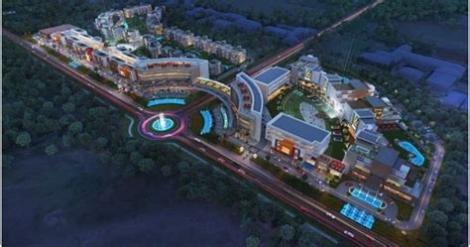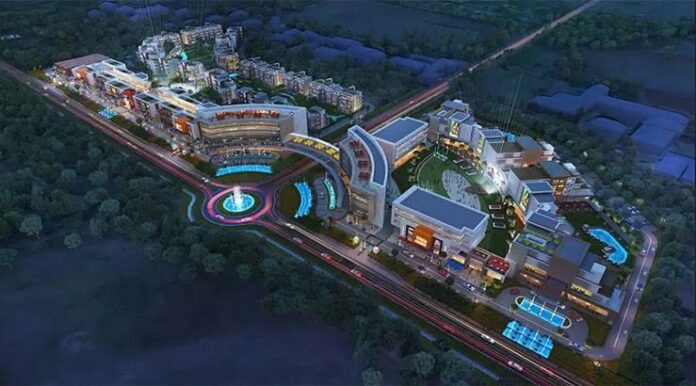The Kenyatta family took a key step to realizing its long-held ambition of building a city on its vast land holdings outside Nairobi a few years ago when it filed a formal application to authorities for an environmental audit of the project.
The family, which is among Kenya’s biggest landowners, wanted to build the mixed-use development on an 11,000-acre farm that was being occupied by its giant dairy processor Brookside.
Northlands City, as the planned city which is under construction is known, was expected to dwarf similar projects such as Tatu City upon completion.
The city incorporates low-to-high income residential areas, commercial space, a central business district, schools, an industrial area and an agricultural zone.
The land also hosted the Uhuru Kenyatta Secondary School, which together with Peponi School occupy 86 acres.
Hotels, land, companies associated with President Uhuru Kenyatta
A Strategic Environmental Assessment (SEA) report for the project indicated that the different zones will support a population of 250,000 people.
The plan, submitted to the National Environment Management Authority (Nema) did not indicate the cost of the project. But going by the Sh. 240 billion for Tatu City, Northlands was expected to cost more than twice the amount. This meant that the city could consume over Sh. 500 billion.

The 11,576-acre piece of land is located 15 km from the Nairobi city centre and is traversed by the recently completed Eastern bypass. Much of the land is currently used for livestock grazing and wildlife — with belts of eucalyptus plantations.
Its strategic location near central Nairobi and the Jomo Kenyatta International Airport (JKIA) was highlighted in the report as major advantages for those seeking to live or conduct business there.
“Whilst a key focus will be to meet the needs of the emerging middle class, different areas will cater for older couples, families, and young professionals,” the report said.
“Areas of lower cost housing will also be provided to meet the needs of low-income earners and prevent the emergence of unplanned slum areas.”

A total of 3,570 acres were set aside for residential housing—including low density residential (3,134 acres), high density residential (306 acres) and medium density residential (130 acres).
The medium residential area would have 670 town houses and 368 housing units in flats while the low density area was reserved for 601 villas and 1,320 townhouses.
Northlands would also have a high-density residential area on which blocks of flats having 6,980 housing units and 3,100 townhouses would be built while 390 acres were set aside for a business district, including 33 acres for a mall/hotel and two acres for a clubhouse.
The business district would be located near Kenyatta University and the Thika superhighway.
Bank refunds customer Sh. 80,000 stolen from account
The planners of the city also set aside 695 acres for an industrial park, 650 acres for a logistics park while Brookside Dairies would occupy the remaining 65 acres. Some 1,697 acres would serve as open recreational space, including 266 acres of water features.
The biggest portion of the land — 5,156 acres — was, however, reserved for wildlife conservation and agriculture. The SEA report said that the master plan would be implemented in four phases over a period of 50 years.
The report indicated that the quarter-a-million residents would put intense pressure on the Eastern bypass and Thika superhighway, highlighting concern over the project’s possible impact on human and vehicular movement in the area.
“The projected total daily vehicular trips to and from the development to the west (Thika Road) is given as up to 27,324 at the end of phase 3 while to the East (eastern Bypass) is given as 30,010 vehicles per day at the end of phase 3,” the report said.
“These volumes are expected to have a considerable impact on the traffic flow and capacity of the existing roads as well as adjacent intersections.”
Northlands, which was owned by Integer Limited, was set to join other large-scale development projects in Kiambu County that have taken advantage of vast land holdings previously used for agriculture.
The development pattern was to set up the infrastructure (roads, water, power, sewer lines) and then lease out parcels of land to those who want to build homes and develop industries or commercial space.
It also involved finding co-investors to put up flats, which would then be sold out. Northlands was positioned as an alternative to Nairobi CBD both in terms of access (especially to JKIA) and quality for logistics firms, and other businesses.
“The city has out grown its central business district (CBD), and experiences problems of congestion, lack of adequate office and parking facilities and a poor environment,” the report said of Nairobi.
“Many of the office buildings within the CBD are not well suited to modern business requirements, and some businesses are now considering moving out of the CBD, or have moved out and have opted for edge of city centre or suburban locations.”
Irine Njeri: I connect the youth to overseas jobs
The development was expected to add another feather to the Kenyatta family’s investment cap that spans real estate, manufacturing, agriculture, and financial services. The Northlands was mooted in 2011. Kenyatta Family Northlands City. This feature was first published by the Business Daily, which is Kenya’s only daily business newspaper. Kenyatta Family Northlands City.








